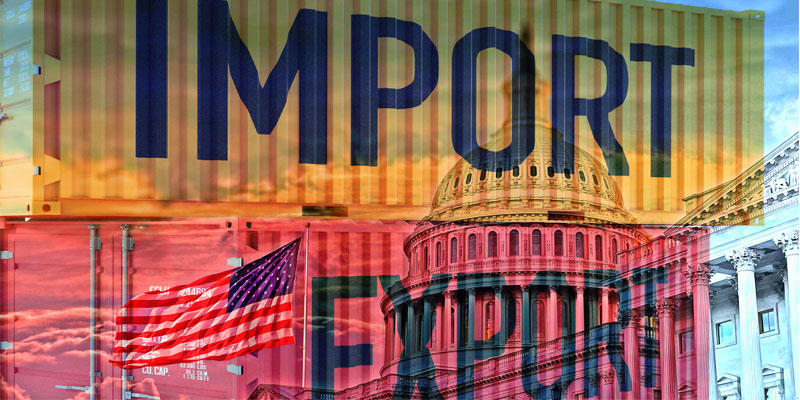
Vessel utilisation remained high from Asia, primarily due to blank sailings, though utilisation levels will probably show a ‘Golden Week’ decline, while global air freight capacity was up 15% last month and while most regions and trade-lanes are seeing rates down from their record 2021 levels, they still remain far above pre-pandemic 2019 levels.
OCEAN
The container shipping lines’ blank sailing program from Asia into Europe is largely balancing the supply and demand equation in their favour, with full vessels in the coming weeks.
Asia backhaul space situation is relaxed and while there are no issues with capacity, some vessel delays and blank sailings/suspension of services are still in place. Rates are stable on a very low level.
On the transpacific, carriers implemented a GRI in April, but the announced May increase has yet to materialise. It is common for the lines to try and increase base rate levels in the 2nd quarter, ahead of annual contract negotiations with their biggest volume (BCO) shippers, but with volumes softening there are doubts about them sticking.
Some shippers are concerned by a USWC strike as ILWU negotiation continues on the West Coast.
While the transatlantic has been more resilient than many other trades, it is softening as weak US demand and surplus capacity impacts Europe to North America routes.
Despite the market softening, the container shipping lines have remained restrained in their blank sailings programs, with only 3.1% of capacity withdrawn in April, and 2% of capacity pulled in May.
There were noticeable improvements across all metrics of schedule reliability and average delay on a global, carrier, carrier alliance, and trade lane level in the 1st quarter, with metrics closer to pre-pandemic levels than the historic lows of the pandemic-impacted years.
On a global level, schedule reliability increased to 58.3%, which was a 3.4% increase Q/Q, and a 24.9% improvement on 2022.
The average delay for ALL vessel arrivals improved to 1.70 days, dropping by -2.88 days Y/Y, while the average delay for LATE vessel arrivals improved to 5.23 days, a notable – 2.43 day improvement Y/Y.
AIR
The air freight market, which stabilised in April, is starting to see a downward rate trend due to additional capacity being deployed, during the busy summer period, with carriers now starting to compete for belly cargo.
Inflation, high interest rates and the geopolitical situation continues to impact air freight, with global air freight volumes down 11.1% compared to 2022, while capacity has grown by 4.5% compared to the same period in 2019.
Export volumes out of China have also declined due to low demand in the West, while corporate sentiment is actually improving and other positive indicators, such as production and new orders, have reached 9 and 12 month highs respectively.
Rate developments through April were somewhat inconsistent, with some routes seeing reductions, while others have seen little or no change.
The Baltic Exchange Air freight Index (BAI) indicates falls on Asia and Europe, Asia and North America and across the Atlantic, which is unusual as rates tend to rise slightly – or at least stay flat – in April compared with March.
The BAI index for Hong Kong to North America shows prices significantly down on 2022, but still far above the rates for the month in pre-Covid 2019.
It was a similar trend on services from Hong Kong to Europe where rates declined 33.6% compared with last year, but are above the month in 2019.
Globally, air freight capacity was up 15% last month, with large increases in most regions and trade-lanes, taking rates down from their record 2021 levels, but still far above pre-pandemic 2019 levels.
ROAD
While it’s typical for road freight rates to dip after the Easter holiday season, this year’s drop is suggests the market is recalibrating after its double-digit surge in 2022, but any return to pre-pandemic conditions is going to be exceptionally challenging, especially with capacity and driver shortages remaining a major concern.
The Upply, Ti & IRU European road freight rates index for Europe shows the spot rates index fell by -7.5 points quarter-on-quarter (q-o-q) to 132.5 points. This is the first-time rates have fallen for two consecutive quarters since Q2 of 2020.
While freight rates are expected to continue to soften in Q2 2023, they will remain elevated in comparison to historic norms, as supply side pressure keeps costs high, though toward the end of the year volumes are expected to start recovering, which should apply upward pressure on rates.
Whatever challenges your supply chain may face, our commercial vehicle fleet and the price and capacity agreements we have in place with our long-term partner air and ocean carriers mean that we continue to deliver resilient and reliable supply chain solutions.
Our purchase order management and supply chain tracking technology support the most demanding global trading regimes, providing transparency and control.
EMAIL Andy Costara to learn more and see how our technology can support your supply chain.





